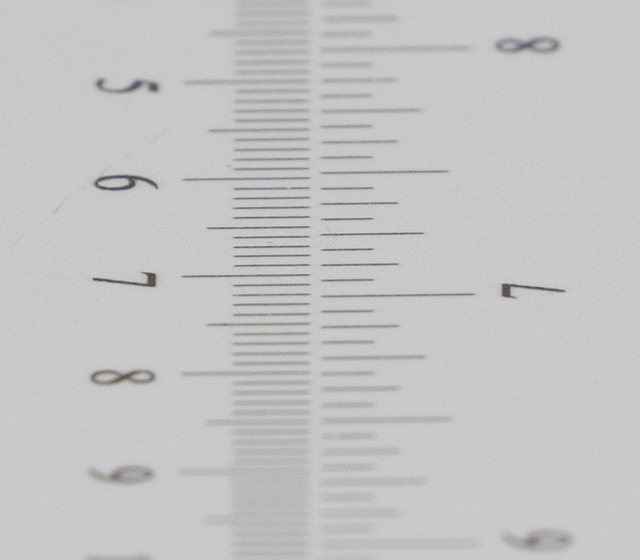Introduction
Over the last couple of decades, we came to expect how a 70/80-200mm f/2.8 shall look like – these lenses are fairly big with a length around the 20cm mark, quite heavy (~1.5kg) and first and foremost – they have to have a constant physical size across the zoom range. Well, this time Canon had different ideas with their new Canon RF 70-200mm f/2.8 USM L IS and the initial reaction within the community was a bit of a mixed bag. The new lens is about 27% more compact and lightweight and as such nicely aligned to the smaller mirrorless cameras. Nobody complains about that for sure. However, the lens does extend when zooming out. Despite the promise of weather sealing, this raises question marks around the long-term reliability. Now yours truly isn’t overly concerned by this because Canon has been offering many L-class zoom lenses of this kind over the years and that worked out for most people. However, another aspect that may produce more headaches is the price tag of the lens. Fast tele-zoom lenses have never been cheap but at around 2700USD/2850EUR, the Canon lens reaches new heights. Of course, prices inevitably have to go up when the production volume tanks but it seems as we are in a vicious cycle of price increases which will alienate many users because camera gear is just getting unaffordable.
Regardless of what you may think of the extending zoom mechanism, the quality of the construction is superb – albeit you expect no less than that from such an expensive lens. The lens body isn’t made of metal but whatever it is, it feels as sturdy. The zoom and focus control rings operate smoothly. The extra, configurable RF control ring is also provided. The tripod mount is detachable – see also the picture above where we removed it. With the attached tripod mount, the camera-lens combo is back-heavy, even if the lens is fully extended. The lens hood is now using a white/cream color scheme with a rubber ring at the front. There’s also a sliding window for operating polarizer filters on the hood. We didn’t notice any zoom creeping during our time with the lens but there’s a transport lock just in case.

The AF system uses Canon’s “Nano USM” with two motors instead of just one. The result is pretty astounding – the AF speed is extremely fast and pretty much second to none in this lens class (for mirrorless lenses at least).
Manual focusing works, as usual, by-wire. This is more precise than a coupled mechanism and we have no issues with this whatsoever. The distance scale is gone because of that though. While the focus action is very precise, we weren’t overly impressed by the focus accuracy – more on this later. The lens does exhibit a certain degree of focus breathing (change of focal-length/magnification during focusing) which not ideal for videos or exotic use cases such as focus stacking.
Of course, Canon implemented its last generation image stabilizer with a claimed gain equivalent to 5 f-stops. Whether you can reach such a gain depends on a variety of factors but it’s a good idea not to exploit this to the max unless required. Interestingly, the lens features three IS modes. There are the usual two for still photography and panning and a new 3rd one for “irregular movement” (e.g. sports photography).
| Specifications | |
|---|---|
| Optical construction | 17 elements in 13 groups including 1xSUD, 3xUD, 1x UD-aspheric, 1xaspherical elements |
| Number of aperture blades | 9 (rounded) |
| min. focus distance | 0.7m (max. magnification ratio 1:4.34) |
| Dimensions | 89.9×146mm |
| Weight | 1200g (1070g without tripod mount) |
| Filter size | 77mm |
| Hood | barrel-shaped (bayonet mount, supplied) |
| Other features | weather-sealing, image stabilizer (5 f-stops), additional control ring, fluorine coating |
Distortion
The Canon RF 70-200mm f/2.8 USM L IS produces only slight image distortions – for a mirrorless lens anyway. In uncorrected images, you may be able to spot a slight barrel distortion (1.2%) at 70mm. In the medium to upper zoom range, they are changing to pincushion type.



You have, of course, the option to auto-correct the distortions either in-camera or in your favorite RAW converter. In this case, you have nothing to worry about anyway – see below.



Vignetting
The vignetting characteristic is quite interesting – or in other words: it is a bit of a weakness. In uncorrected images, the vignetting is still moderate at 70mm f/2.8 (~1.2EV / f-stops). However, the light falloff increases when zooming toward longer focal lengths. The peak is reached at 200mm with a vignetting of ~2.6EV (f-stops) which is whoppingly heavy for a tele lens. The issue is substantially reduced at f/4, though and pretty much gone at f/5.6.

Once again, if you prefer to activate image auto-correction, the algorithm takes care of all this resulting in a very slight vignetting at maximum aperture (at the cost of increased corner noise due to the signal amplification).

MTF (resolution)
The Canon RF 70-200mm f/2.8 USM L IS is extremely sharp across the range – although it’s worth mentioning that the Canon EOS R (used as a test camera) isn’t overly ambitious with its 30-megapixel sensor. The broader image center is excellent straight from f/2.8 and the outer image field is on a very good level. Stopping down to f/4 lifts the quality even further with a superb center and excellent borders. Diffraction has a limiting effect beyond f/8 but at f/11 it’ll be hard to notice. As usual, you should avoid stopping down to f/16 and beyond.
The centering quality of the tested sample was very good. The field curvature is very low.
Please note that the MTF results are not directly comparable across the different systems!
Below is a simplified summary of the formal findings. The chart shows line widths per picture height (LW/PH) which can be taken as a measure of sharpness. If you want to know more about the MTF50 figures, you may check out the corresponding Imatest Explanations

Chromatic Aberrations (CAs)
Lateral CAs (color shadows) are very low with an average pixel width of less than 1px at the image borders. Lateral CAs can also be auto-corrected without any loss in image quality.

Bokeh
The sharpness is one thing but what about the quality of the out-of-focus blur aka “the bokeh”? Let’s have a look at out-of-focus highlights first.
As you can see below, the highlight discs are nicely rendered with no outlining and a very smooth inner zone. This is almost of prime lens level! The circular disc shape remains intact at f/4 and there are only traces of an edgy aperture shape at f/5.6

While the discs are perfectly circular in the broader center zone, they deteriorate towards the borders/corners of the image field. This is a normal vignetting effect and pretty much unavoidable. As you can see, there are cat eyes in the image corners at f/2.8. Stopping down to f/4 corrects this a bit and the discs are almost restored at f/5.6.



When looking at the general quality of the blur in the focus transition zone, the quality of the bokeh is good, although not perfect. The foreground blur (shown to the right) is actually very smooth. The background blur (to the left) is decent but you can spot some rough edges here and there.

Bokeh Fringing (LoCA)
Bokeh fringing – also referred to as LoCAs – is a color fringing effect on the Z-axis. It shows up as purplish halos in front of the in-focus zone and greenish beyond. The effect is visible at f/2.8 albeit it is not extreme. Stopping down to f/4 reduces the fringing and there are traces left at f/5.6. Keep in mind that bokeh fringing is normal in all but a handful of very expensive APO lenses.
If you scroll through the provided sample crops below, you may notice another effect – the focus point shifts towards the back (see how much the “6” improves whereas the “8” remains quite blurry). These are so-called RSAs (Residual spherical aberrations) or in other words – focus shifts when stopping down (with deactivated AF). Please note that Canon also released a firmware update that corrects the issue with ACTIVATED AF. Even so, it is a bit disappointing to see this effect in such an expensive lens.




Sample Images
Camera manufacturers have to offer a first killer product when starting a new system. Nikon decided to do it via a manual focus 58mm f/0.95 for $7000 ... not sure whether this worked out for them ... whereas Canon chose a different approach - they decided to disrupt our expectations of how a 70-200mm f/2.8 should look like. Upon the first contact, you can't be anything but impressed by the size of the Canon RF 70-200mm f/2.8 USM L IS, especially at a time when lens dimensions tend to super-size rather than shrink. However, even Canon can't do miracles thus, while the lens has a substantially reduced length and weight, it uses an extending zooming mechanism. It's a matter of personal taste whether you are in the love or hate camp regarding this change. However, this doesn't have a negative impact on image quality (mostly). The results are tack sharp throughout the zoom range and at all relevant aperture settings. Lateral CAs are very low. The same goes for image distortions. Vignetting is a bit of a weak spot, though, unless you prefer to keep image auto-correction activated. The light falloff in the upper range is too heavy for such a lens. The quality of the bokeh is generally very good - the smooth out-of-focus highlights are especially impressive here. The bokeh fringing is present but quite well controlled. A bit of an ugly aspect are focus shifts (RSAs) when stopping down. This is nothing to worry about when using autofocusing - so most users will never notice it - but the issue can hit you in manual focus mode.
The build quality is great. Canon may have moved away from an outer metal shell but except for the lack of the "cold" haptic feedback, you just won't notice the difference. While the zoom mechanism does extend towards longer focal lengths, everything just feels rock solid. If you don't use a tripod, you can also remove the (metal) tripod mount making the lens even more compact than it already is. Another outstanding feature of the Canon RF 70-200mm f/2.8 USM L IS is the AF speed. We have been extremely impressed by Canon's "Nano USM" in the past, but it's even faster on this lens, thanks to two AF motors. The image stabilizer is rated at 5 f-stops. Yours truly never reaches the claimed rating but you should be able to come close at least.
Despite the few little issues, it's a no-brainer to decorate the Canon lens with our "highly recommended" badge, of course. Even so, it's worth noting that the pricing is nothing short of excessive. Professional photographers may not mind too much but it's probably over the top for most enthusiasts. If this trend continues, the manufacturers will destroy the (mirrorless camera) market that they are just trying to create. Hopefully, Canon will at least provide a more affordable f/4 lens following the same design approach for "the rest of us".
-
Optical Quality (30mp)
-
Build Quality
-
Price / Performance


